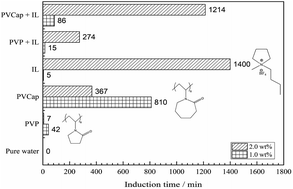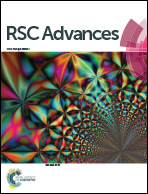Experimental study on the kinetic effect of N-butyl-N-methylpyrrolidinium tetrafluoroborate and poly(N-vinyl-caprolactam) on CH4 hydrate formation
Abstract
In this work, a series of experiments were carried out to study the kinetic inhibition performance of N-butyl-N-methylpyrrolidinium tetrafluoroborate ([BMP][BF4]), poly(N-vinylcaprolactam) (PVCap) and compound inhibitor systems on methane hydrate from both macroscopic and microscopic perspectives. In the macroscopic experiments, the influence of the concentration, the ratio of inhibitors, the subcooling on the induction time and gas consumption rate of methane hydrate were studied. The results indicated that [BMP][BF4] could inhibit the growth rate of CH4 hydrate, but failed to delay the nucleation. An improved inhibitory effect was observed by combining [BMP][BF4] and PVCap, and the optimal ratio of the two inhibitors was obtained to gain the best inhibition performance. Furthermore, the microstructure and morphology of methane hydrate crystals formed in different inhibitor systems were investigated through powder X-ray diffraction (PXRD), Raman spectroscopy and scanning electron cryomicroscopy (Cryo-SEM) methods. It was found that [BMP][BF4] and PVCap had different influences on the large cage occupancy by CH4 and the morphology of methane hydrate.



 Please wait while we load your content...
Please wait while we load your content...